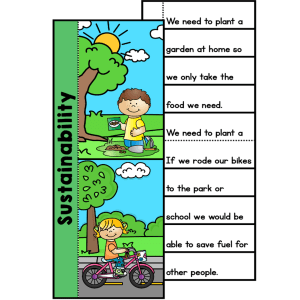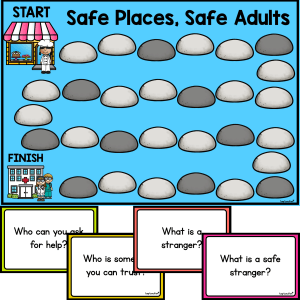Catching Fish: Sorting & Graphing Data

Description
Looking for a fun and interactive way to explore sorting and graphing in your classroom? The Catching Fish: Sorting & Graphing Data activity brings excitement to early data collection, giving students hands-on experience with categorising, counting, and visually representing information in a purposeful and engaging way.
In this fishing-themed activity, students collect coloured fish cards and sort them on a mat. After sorting, they record the number of fish by colour using a picture graph or column graph – depending on their level and your learning focus. With both colour and black-and-white options included, this resource is easily adaptable for printing needs and learning preferences.
Whether used during a statistics unit, as part of a hands-on maths rotation, or in small group work, Catching Fish: Sorting & Graphing Data promotes core skills in data collection, visual representation, and analytical thinking. It’s a low-prep, high-engagement resource that makes early graphing concepts feel fresh, tactile, and fun.
Key Learning Outcomes
- ✅ Collect, sort, and count categorical data using visual prompts
- ✅ Represent data using a picture graph or column graph
- ✅ Interpret data sets by identifying totals, differences, and categories
- ✅ Build early numeracy and statistical thinking through hands-on practice
What’s Included
- Detailed teacher instructions
- 6 sorting mats (in high and low colour options)
- 6 sets of fish cards (available in full colour and black and white)
- 2 recording sheet styles – picture graph and column graph versions
Materials Needed
- Printed sorting mats and fish cards (colour or BW based on your choice)
- Scissors for cutting out fish cards
- Recording sheets – one per student or pair
- Pencils or markers
- Optional: magnetic tape and toy fishing poles for an interactive twist
How to Use
- Print and cut out the fish cards and sorting mats. Choose colour or BW versions depending on your needs.
- Provide each student or pair with a set of fish cards and a sorting mat.
- Students randomly draw or “catch” fish cards and place them in the corresponding areas on the mat based on colour.
- Once all fish have been collected, students use a recording sheet to graph their results using either a picture graph or column graph.
- Students analyse their graphs by answering questions such as which colour had the most, the least, or how many in total.
- Optional: Add magnetic tape to fish and let students use magnetic rods to “fish” for data in a game-like setting.
Ideas for Classroom Use
- 💡 Use as a hands-on maths station during your statistics unit
- 💡 Provide one version of the graph for early learners and another for extension groups
- 💡 Incorporate movement by having students physically "fish" from around the room
- 💡 Pair with themed literacy books or science units about animals or classification
Top Teacher Tips
- 💛 Print on thick cardstock and laminate for long-term classroom use
- 💛 Store card sets in labelled zip-lock bags for easy prep and pack-up
- 💛 Provide sentence starters for interpreting graphs (e.g., “The most common colour is…”)
- 💛 Pair with our Sorting Teddies resource for extra practice and variety
Additional information
| Number of Pages | 17 |
|---|---|
| File Format | |
| Australian Curriculum Code | AC9M1ST01, AC9M1ST02, AC9M2ST01, AC9M2ST02, AC9MFST01 |
Australian Curriculum V9
F - 6
Lorem ipsum dolor sit amet, consectetur adipiscing elit.
Lorem ipsum dolor sit amet, consectetur adipiscing elit.
Lorem ipsum/ Lorem ipsum/ Lorem ipsum
Lorem ipsum dolor sit amet, consectetur adipiscing elit.
Lorem ipsum dolor sit amet, consectetur adipiscing elit.
Lorem ipsum/ Lorem ipsum/ Lorem ipsum
Lorem ipsum dolor sit amet, consectetur adipiscing elit.
Lorem ipsum dolor sit amet, consectetur adipiscing elit.
Lorem ipsum/ Lorem ipsum/ Lorem ipsum
Lorem ipsum dolor sit amet, consectetur adipiscing elit.
Lorem ipsum dolor sit amet, consectetur adipiscing elit.
Lorem ipsum/ Lorem ipsum/ Lorem ipsum
Lorem ipsum dolor sit amet, consectetur adipiscing elit.
Lorem ipsum dolor sit amet, consectetur adipiscing elit.
Lorem ipsum/ Lorem ipsum/ Lorem ipsum





